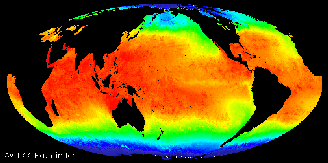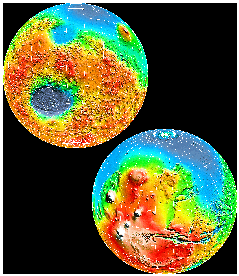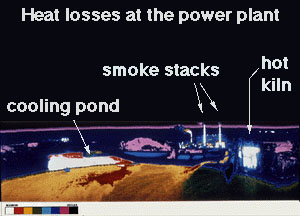Craters
The table below contains information about the distribution of craters on
Earth and Mars.
Earth

This image shows ocean temperatures (red=warm, blue=cold).
Click on image for full size version (55K GIF)
Image courtesy of the U.S. Geological Survey
Two-thirds of the surface of the Earth is covered with
water. The rest of
the land surface is lightly cratered. On Earth, craters are erased from
the surface by the action of wind and water erosion. Over time, the
shape of features on Earth's surface gradually changes.
|
Mars

Look at the full size version of this picture! You'll see numerous
craters on the surface
of Mars. Colors show the height of the surface (blue=low,
red-white=high).
Click on image for full size version (160K GIF)
Image from Mars Global Surveyor, NASA/JPL
There are no oceans on Mars! Almost the entire
surface of
Mars has craters. The Tharsis Ridge, where the volcanoes of Mars
are located, is lightly cratered. The lowlands of Mars are
have more craters. The most craters are in the Highlands of
Mars, in the southern
hemisphere (seen in the upper image above).
|









